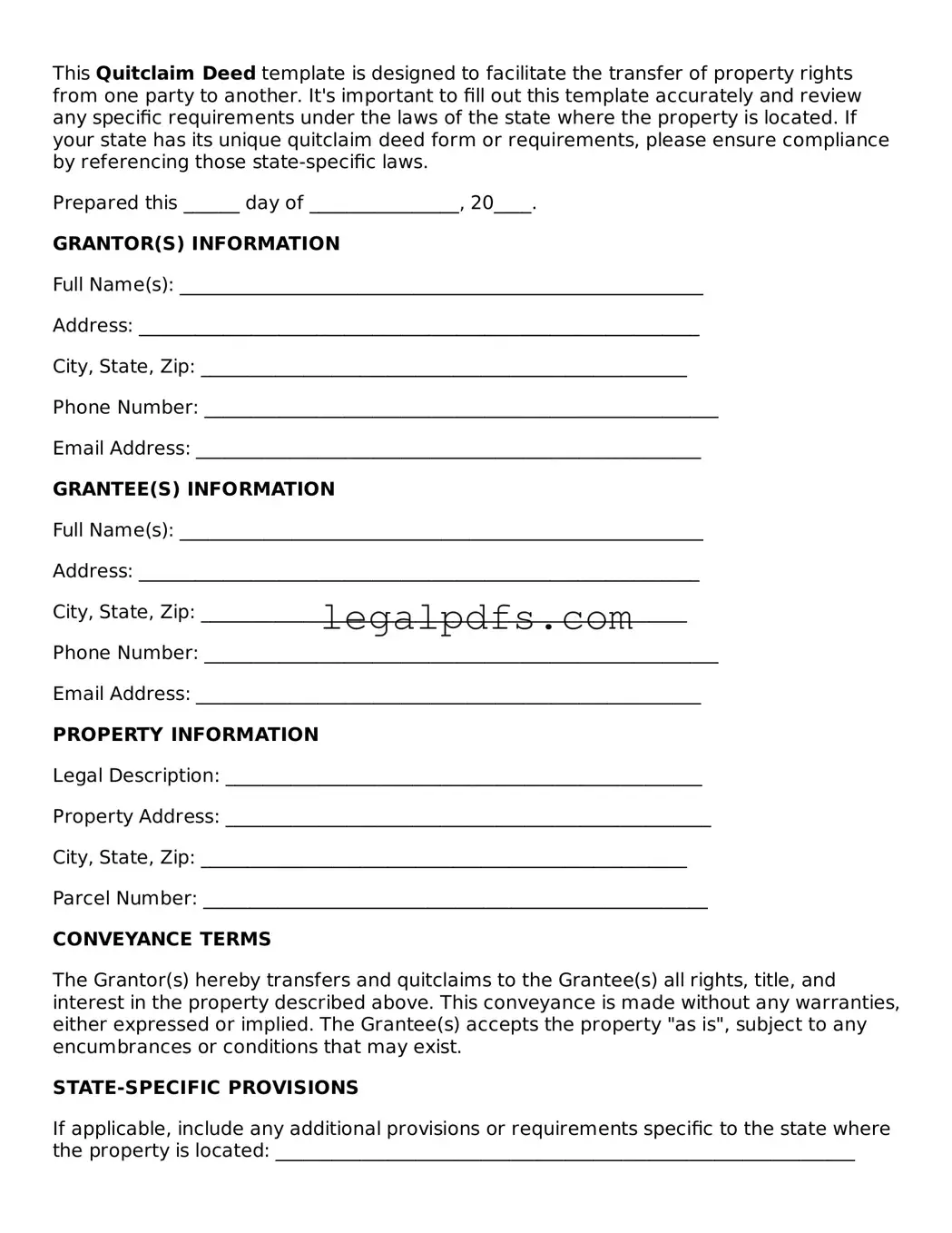This Quitclaim Deed template is designed to facilitate the transfer of property rights from one party to another. It's important to fill out this template accurately and review any specific requirements under the laws of the state where the property is located. If your state has its unique quitclaim deed form or requirements, please ensure compliance by referencing those state-specific laws.
Prepared this ______ day of ________________, 20____.
GRANTOR(S) INFORMATION
Full Name(s): ________________________________________________________
Address: ____________________________________________________________
City, State, Zip: ____________________________________________________
Phone Number: _______________________________________________________
Email Address: ______________________________________________________
GRANTEE(S) INFORMATION
Full Name(s): ________________________________________________________
Address: ____________________________________________________________
City, State, Zip: ____________________________________________________
Phone Number: _______________________________________________________
Email Address: ______________________________________________________
PROPERTY INFORMATION
Legal Description: ___________________________________________________
Property Address: ____________________________________________________
City, State, Zip: ____________________________________________________
Parcel Number: ______________________________________________________
CONVEYANCE TERMS
The Grantor(s) hereby transfers and quitclaims to the Grantee(s) all rights, title, and interest in the property described above. This conveyance is made without any warranties, either expressed or implied. The Grantee(s) accepts the property "as is", subject to any encumbrances or conditions that may exist.
STATE-SPECIFIC PROVISIONS
If applicable, include any additional provisions or requirements specific to the state where the property is located: ______________________________________________________________
SIGNATURES
The Grantor(s) and Grantee(s) must sign this Quitclaim Deed in the presence of a notary public.
______________________________ ______________________________
Signature of Grantor Date
______________________________ ______________________________
Signature of Grantee Date
NOTARIZATION
This document was acknowledged before me on this ______ day of ________________, 20____, by the above-named Grantor(s).
______________________________ ______________________________
Signature of Notary Public Date
My commission expires: _____________________________________________
